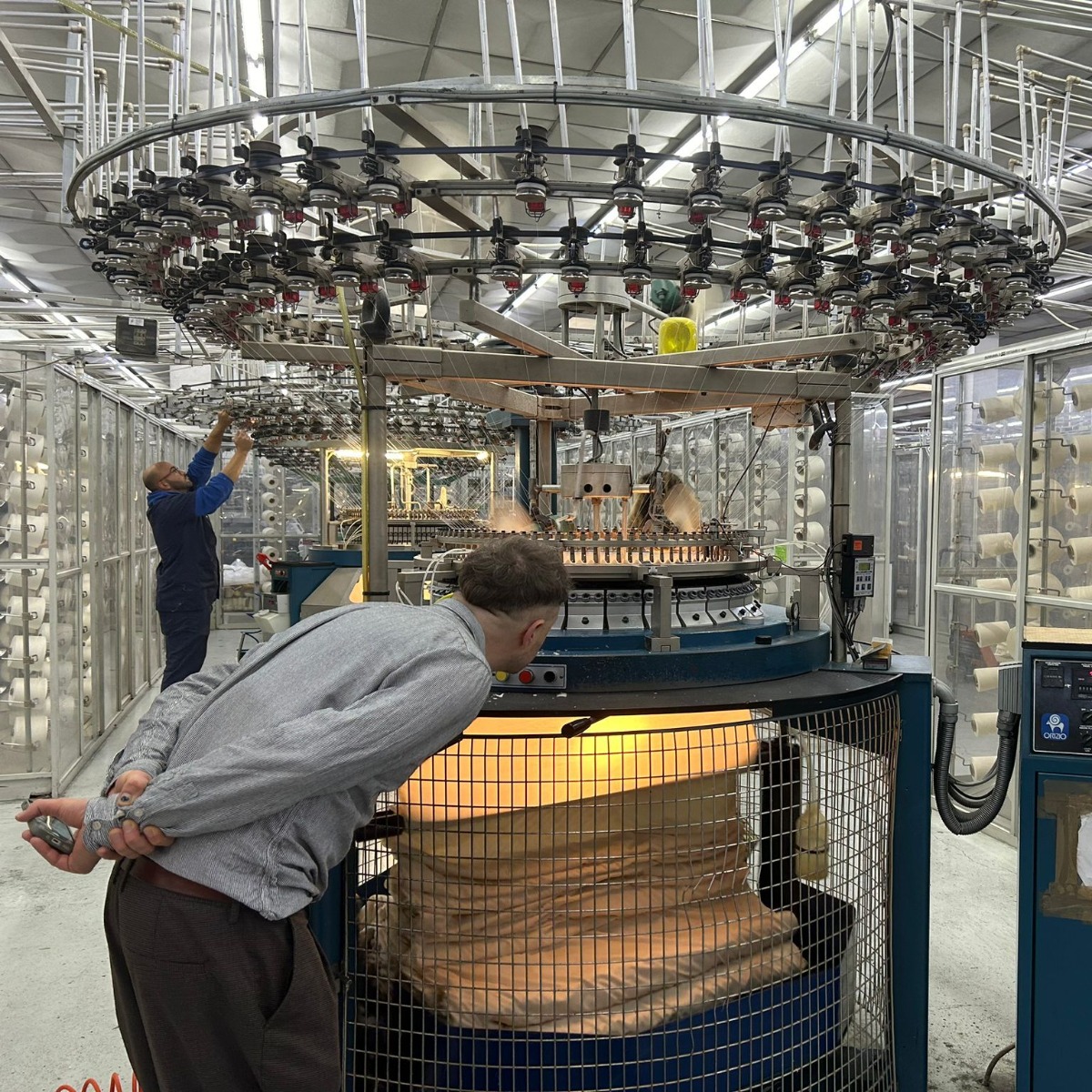

In contrast, the weaving machine works by interlacing two sets of threads – the warp and the weft – at right angles to each other to produce flat fabrics. Modern weaving machines can produce an impressive variety of fabrics with different weights, textures, and patterns. The precision and speed at which these machines operate are a testament to the technological progress in the textile industry. They allow for the production of complex designs and patterns with high efficiency - Jeanette certainly looks thrilled, doesn't she?!
